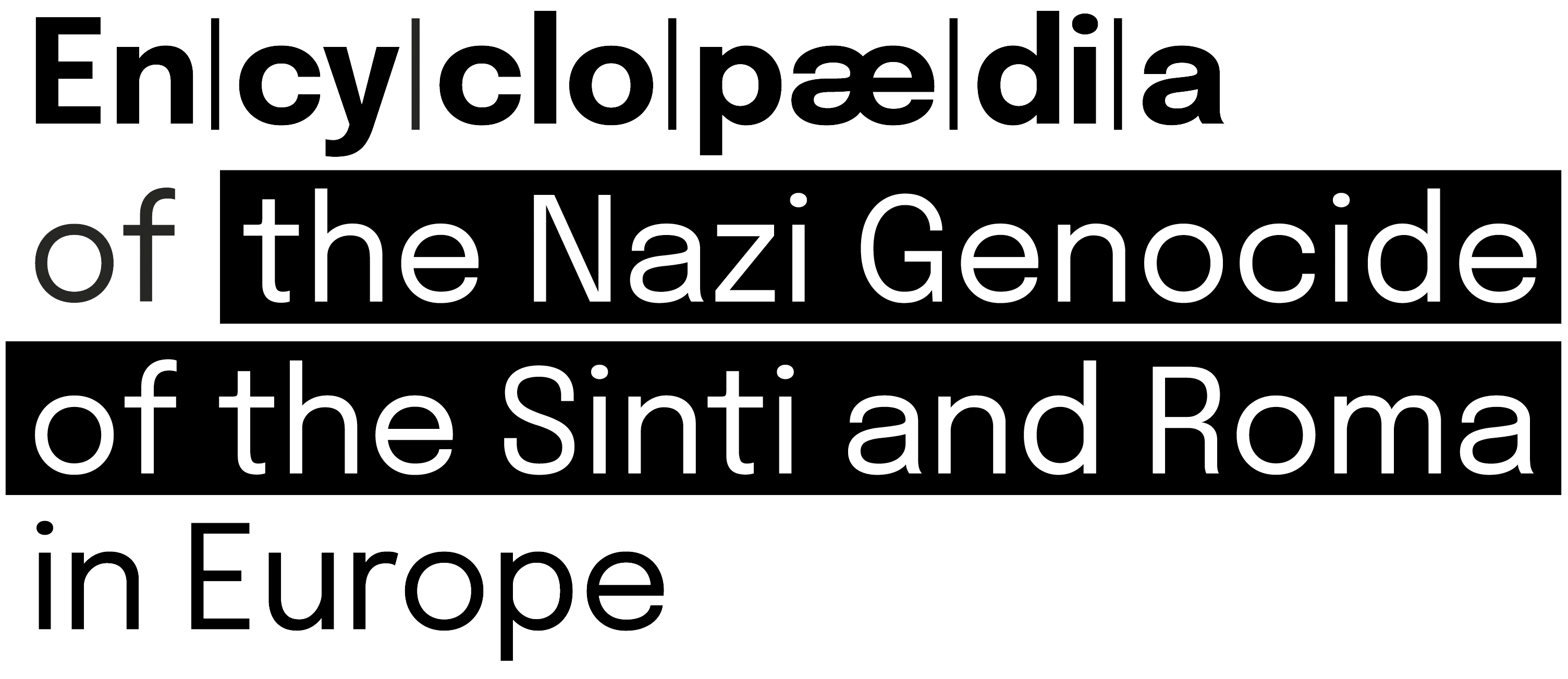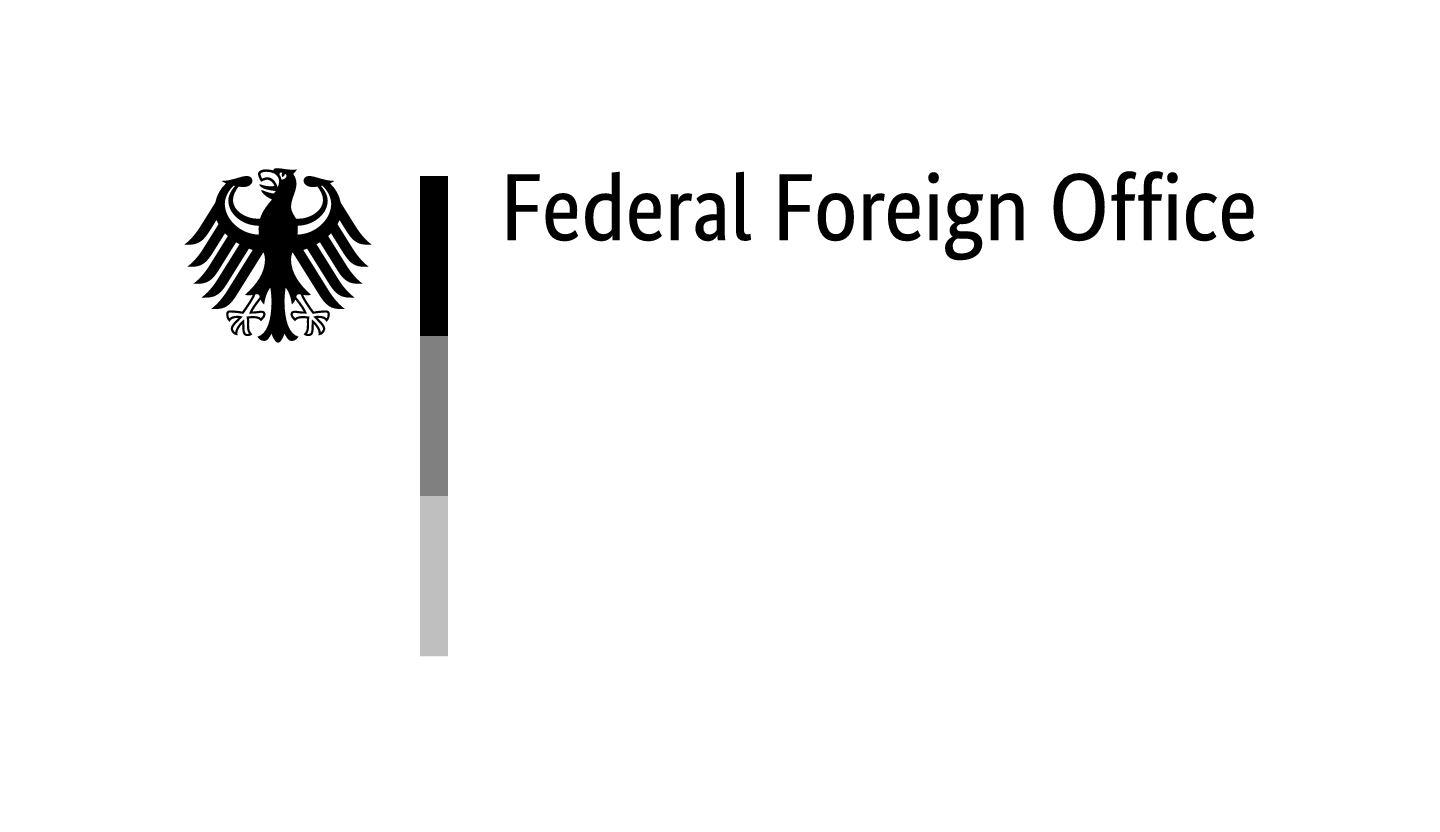Tips for Accessing Published Content
This website has been online since 5 March 2024. When you visit it, you will notice that the titles of many lemmas—this is the name of the articles in a reference work—appear in grey. This means that they have not yet been published. The reason is that the Encyclopaedia of the Nazi genocide of the Sinti and Roma in Europe is a huge international project that is only just beginning. Over 100 authors are currently working on the texts, and all the results will be available gradually. But you can already discover a lot of content. What is there and how to find it—this is explained below.
Language Versions
First of all, a note on the languages: The entire content will be available in German and English in the future. Currently, almost all existing lemmas are available only in one language version. This is so that the authors have the opportunity to critically review their texts again and to make any additions and updates before a translation is produced. We ask for your understanding in this regard. The links to published lemmas lead to the currently available language versions. If you look at individual authors, the lemmas they have written are displayed in both language versions, and you can tell which language version is available by the font colour (black = published).
National Perspectives
The genocide of the Sinti and Roma in Europe was carried out through deportations to concentration and extermination camps, but on a much larger scale outside the camps in hundreds of places where massacres took place. One country in which almost all Roma were shot to death was German-occupied Estonia. The author Anton Weiss-Wendt has written an overview of the country as well as separate reports on the crime scenes, the perpetrators and the victims. If you follow to his name via the author index, you will find an overview of the relevant lemmas.
Deportations from the German-occupied Benelux countries to the Auschwitz-Birkenau concentration and extermination camp took place in 1944. The texts on the Westerbork (Netherlands) and Mechelen (Belgium) camps as well as biographies of the victims illustrate the scale of the family-by-family deportations that were set in motion by the ‘Auschwitz Decree’ that SS Reichsführer Heinrich Himmler (1900–1945) issued in December 1942. Individual deportations are also known from Luxembourg. For information on the Benelux countries, follow the authors Jérôme Courtoy, Monique Heddebaut, Bas Kortholt, Laurence Schram, Laura Stöbener and Daniel Thilman. There is also a map about the persecution in the Benelux countries, which you can use to get an overview of events in this region.
The persecution in Fascist Italy is largely unknown. For the first time, Paola Trevisan provides a comprehensive account of the persecution measures initiated by the German Reich’s ally. The internment of Sinti and Roma in localities, penal colonies or concentration camps in Italy as well as their banishment to various islands is illustrated by the map entitled ‘Persecution in Italy’.
Crime Scenes
The encyclopaedia places particular emphasis on naming and describing specific crime scenes in order to provide the first comprehensive overview of a persecution that took place in thousands of places. One important aspect is the detention camps that were established exclusively for Sinti and Roma in the German Reich and, with the expansion of the German sphere of influence, in many other countries. Specially created maps provide an overview of the camps, also known as ‚Zigeunerlager‘ [‚Gypsy camps‘], in the German Reich and France.
The encyclopaedia will also deal with the history of Sinti and Roma imprisoned in concentration camps. There are already articles on the Bergen-Belsen, Dachau, Flossenbürg and Natzweiler-Struthof concentration camps.
The murders outside of concentration camps were mainly committed in German-occupied Central, Eastern and South-Eastern Europe, including by allies of the German Reich. Crimes committed in German-occupied Poland have so far been largely unexplored. This topic will be dealt with in depth in the coming months. An overview of the more than 160 crime scenes in the General Government, for which a map has been produced in addition to the lemma on massacre sites, provides an initial impression.
Biographies of Sinti and Roma
The perspective of those affected by persecution is crucial to examining the Nazi genocide. For this reason, around 150 biographies of Sinti and Roma are being compiled as part of the encyclopaedia. If you would like to know which ones are already available, take a look at the rubric Life paths: Sinti and Roma. These biographies shed light on aspects that are often overlooked: the individuality of the victims, their strategies of survival and their resistance, but also the persecution and the losses they suffered.
Other Countries
The Encyclopaedia also aims to present knowledge about the European countries in which the genocide was not committed, as no country remained untouched by the Second World War. There are interesting findings on the situation of or policies towards Sinti and Roma in all countries, and this is important for an overall picture. You can now read what is known about Denmark and Finland.
There is also a lot to report about neutral Switzerland, as it kept its borders largely closed during the war. As a result, Sinti and Roma who tried to escape were turned away and often handed back to their persecutors, as Stéphane Laederich describes.
In her lemma on the United Kingdom, Eve Rosenhaft explores a new, previously unexamined topic: What did the international public know about the crimes committed against Sinti and Roma during the war? And what do we know about the reactions in the country that fought as an ally against the National Socialist German Reich?
Photographs and chronology
In the ‘Photographic perspectives on the genocide’ section, you will find an initial selection of photographs with detailed captions, enabling you to pursue topics further on your own.
The chronology gives a unique impression of the multitude of persecution measures to which Sinti and Roma were subjected during World War II. All the events covered in the published lemmas are summarised here. Even if this chronology is far from complete, the direct comparison of the offences committed in different countries already provides deep insights into the extent of the crimes committed.




